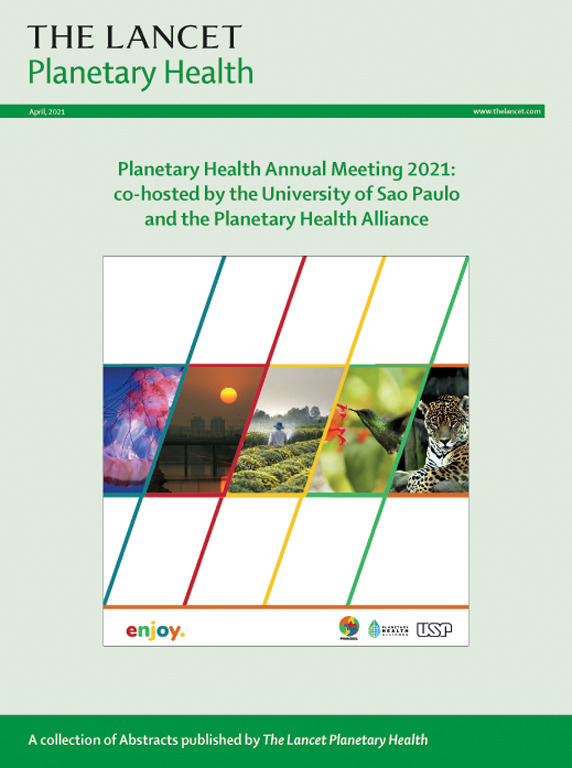Urban Aedes aegypti suitability indicators: a study in Rio de Janeiro, Brazil
IF 21.6
1区 医学
Q1 ENVIRONMENTAL SCIENCES
引用次数: 0
Abstract
Background
Controlling Aedes aegypti stands as the primary strategy in curtailing the global threat of vector-borne viral infections such as dengue fever, which is responsible for around 400 million infections and 40 000 fatalities annually. Effective interventions require a precise understanding of Ae aegypti spatiotemporal distribution and behaviour, particularly in urban settings where most infections occur. However, conventionally applied sample-based entomological surveillance systems often fail to capture the high spatial variability of Ae aegypti that can arise from heterogeneous urban landscapes and restricted Aedes flight range.
Methods
In this study, we aimed to address the challenge of capturing the spatial variability of Ae aegypti by leveraging emerging geospatial big data, including openly available satellite and street view imagery, to locate common Ae aegypti breeding habitats. These data enabled us to infer the seasonal suitability for Ae aegypti eggs and larvae at a spatial resolution of 200 m within the municipality of Rio de Janeiro, Brazil.
Findings
The proposed microhabitat and macrohabitat indicators for immature Ae aegypti explained the distribution of Ae aegypti ovitrap egg counts by up to 72% (95% CI 70–74) and larval counts by up to 74% (72–76). Spatiotemporal interpolations of ovitrap counts, using suitability indicators, provided high-resolution insights into the spatial variability of urban immature Ae aegypti that could not be captured with sample-based surveillance techniques alone.
Interpretation
The potential of the proposed method lies in synergising entomological field measurements with digital indicators on urban landscape to guide vector control and address the prevailing spread of Ae aegypti-transmitted viruses. Estimating Ae aegypti distributions considering habitat size is particularly important for targeting novel vector control interventions such as Wolbachia.
Funding
German Research Foundation and Austrian Science Fund.
城市埃及伊蚊适宜性指标:在巴西里约热内卢的研究
背景控制埃及伊蚊是遏制登革热等全球病媒传播病毒感染威胁的主要策略,登革热每年造成约 4 亿人感染,4 万人死亡。要想采取有效的干预措施,就必须准确了解埃及蚁的时空分布和行为,尤其是在发生感染最多的城市环境中。然而,传统应用的基于样本的昆虫学监测系统往往无法捕捉到埃及伊蚊的高度空间变异性,而这种变异性可能源于异质的城市景观和受限的伊蚊飞行范围。方法在这项研究中,我们旨在利用新兴的地理空间大数据(包括公开的卫星和街景图像)来定位常见的埃及伊蚊繁殖栖息地,从而应对捕捉埃及伊蚊空间变异性的挑战。这些数据使我们能够在巴西里约热内卢市内以 200 米的空间分辨率推断埃及蚁卵和幼虫的季节适宜性。研究结果所提出的埃及蚁幼虫微生境和大生境指标对埃及蚁卵诱捕器卵数分布的解释率高达 72%(95% CI 70-74),对幼虫数的解释率高达 74%(72-76)。利用适宜性指标对誘蚊產卵器计数进行时空插值,可以高分辨率地了解城市未成熟埃及蚁的空间变化,而这是仅靠基于样本的监测技术无法捕捉到的。考虑到栖息地的大小,估计埃及蚁的分布情况对于确定新型病媒控制干预措施(如沃尔巴克氏菌)的目标尤为重要。
本文章由计算机程序翻译,如有差异,请以英文原文为准。
求助全文
约1分钟内获得全文
求助全文
来源期刊

Lancet Planetary Health
Multiple-
CiteScore
28.40
自引率
2.30%
发文量
272
审稿时长
8 weeks
期刊介绍:
The Lancet Planetary Health is a gold Open Access journal dedicated to investigating and addressing the multifaceted determinants of healthy human civilizations and their impact on natural systems. Positioned as a key player in sustainable development, the journal covers a broad, interdisciplinary scope, encompassing areas such as poverty, nutrition, gender equity, water and sanitation, energy, economic growth, industrialization, inequality, urbanization, human consumption and production, climate change, ocean health, land use, peace, and justice.
With a commitment to publishing high-quality research, comment, and correspondence, it aims to be the leading journal for sustainable development in the face of unprecedented dangers and threats.
 求助内容:
求助内容: 应助结果提醒方式:
应助结果提醒方式:


